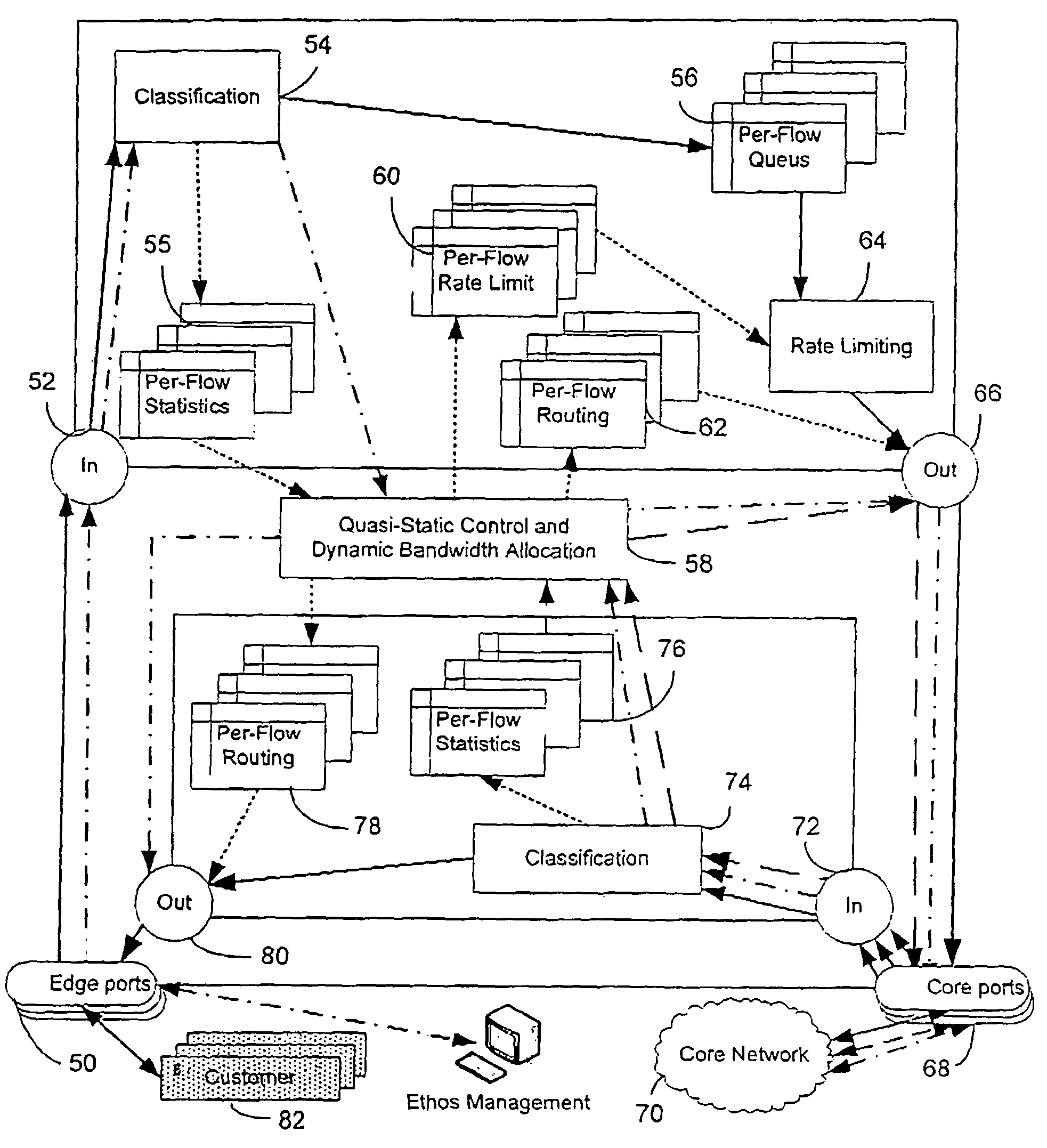Quality of service network and method
- Summary
- Abstract
- Description
- Claims
- Application Information
AI Technical Summary
Benefits of technology
Problems solved by technology
Method used
Image
Examples
Embodiment Construction
[0050]The present invention relates to an edge device for a telecommunications network and to a telecommunications carrier network, particularly an Ethernet network, which is able to provide pre-defined Quality of Service (QOS) to its various customers. This is accomplished by providing the network with a static, or substantially static, routing scheme, together with dynamic admission control for all data traffic entering the network. The network includes a plurality of configurable edge switching devices, usually coupled to a core network, which implement both admission control for data traffic entering the edge devices, and static or quasi-static routing for the traffic through the network, both based on input knowledge of all the network physical and logical links. Preferably the system utilizes admission control based on bandwidth demand statistics throughout the entire network, and quasi-static routing based on network bandwidth utilization statistics throughout the entire netw...
PUM
 Login to View More
Login to View More Abstract
Description
Claims
Application Information
 Login to View More
Login to View More - R&D
- Intellectual Property
- Life Sciences
- Materials
- Tech Scout
- Unparalleled Data Quality
- Higher Quality Content
- 60% Fewer Hallucinations
Browse by: Latest US Patents, China's latest patents, Technical Efficacy Thesaurus, Application Domain, Technology Topic, Popular Technical Reports.
© 2025 PatSnap. All rights reserved.Legal|Privacy policy|Modern Slavery Act Transparency Statement|Sitemap|About US| Contact US: help@patsnap.com



